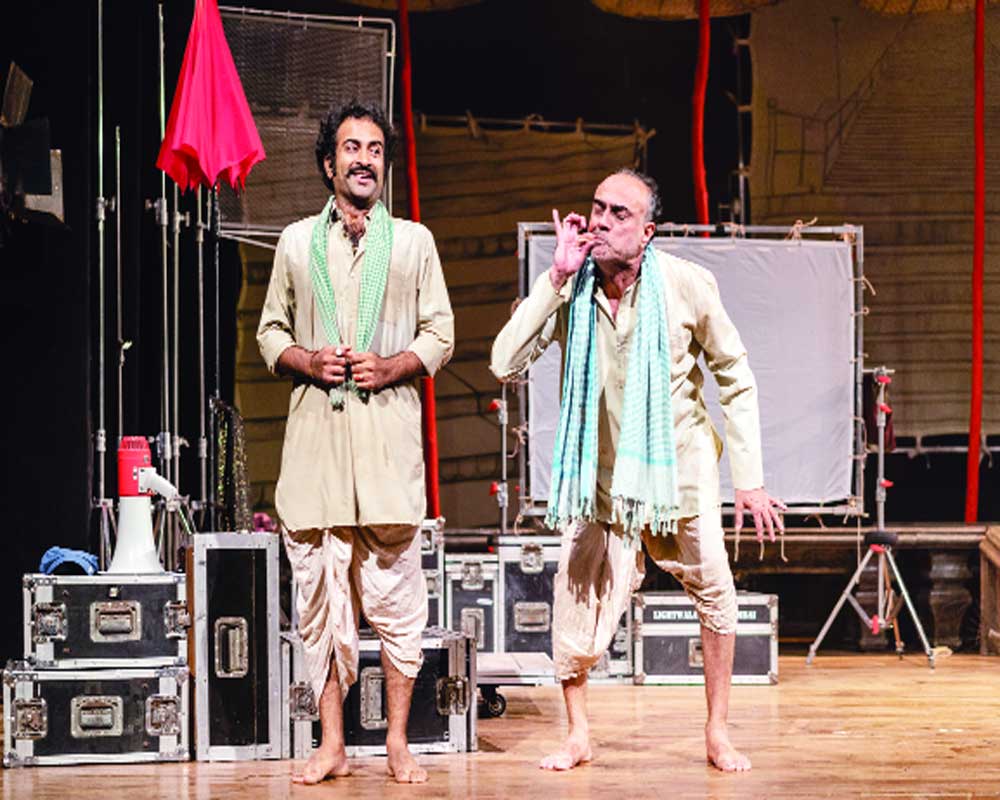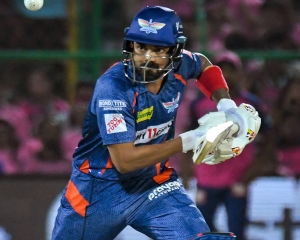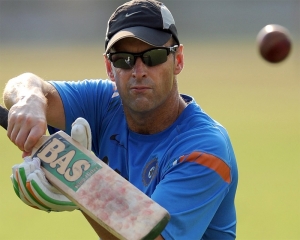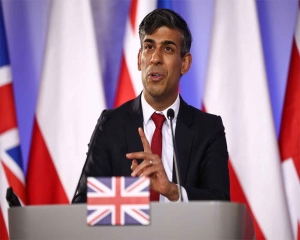Theatre director Mohit Takalkar’s Mosambi Narangi represents a clash between Bollywood’s idea of a small town and its truth. By Chahak Mittal
Why is Bollywood such a powerful industry? Well, it has always made dreams possible and set aspirations (even though some unattainable ones too) for millions of Indians over the years. Some of its elements have been so deeply embedded in our everyday culture that it’s impossible to mark a separating line between them. One may love it or hate it, one just can’t ignore it. Its many stars have become our role models.
Director Mohit Takalkar’s Mosambi Narangi, an Aadyam Theatre’s production, also presents a clash between reel and real life. It showcases that there are both negative and positive misconceptions about the industry among Indians.
The play, which is an Indian translation of the Irish play, Stones in his Pockets, is set in a rural town nestled in the ghats of Banaras, which is turned upside down when a major Bollywood film Isaq Banaraswala is scheduled to be shot at the location. Excited to be experiencing the glitz and glam of the film industry and to be a part of an actual film with music and dance with the actress, Sabrina, is like a ‘dream come true’ for the people of the town. The play revolves around Mosambi and Narangi (played by Ajeet Singh Palawat and Rajit Kapur) — who are chosen to be extras in the film — and explores their trials and tribulations, expectations and disappointments. As the two protagonists struggle to understand the functioning of the Hindi film business, the make-believe glamour of Bollywood quickly fades away and the reality of being an extra kicks in. The disparities between the ‘reel’ life and the ‘real’ life become apparent, paving way for transition of both the characters and the plot.
He says, “What starts off as a simple tale of ordinary people slowly shifts to become a poignant story of life, with multiple themes of aspiration, loss and exploitation. The play actually showcases a clash between the film industry and the locals of the town. They try to differentiate between how it appears to be through the screen and how it really is. And that is quite fascinating.”
One of the most engaging factors of the play for the audience, Mohit says, is that it only stars two actors but around 10-15 different characters. “The fact that only two actors acquire the whole stage and enact all the 14-15 roles is a huge task altogether. It’s also a fun element to watch how the two switch their roles at the drop of a hat. However, it is extremely challenging for both the director and the actors.”
A play with only two actors on the stage reminds one of Samuel Beckett’s Waiting for Godot. Beckett gave the audience an empty stage, a tree in the background, and two figures who waited and survived. And the play took a long time to conquer the stage as well as the minds of the audience. However, here, the actors are protagonists and sidekicks rolled into one. But how has Mohit ensured that it doesn’t leave the audience bored or confused?
He explains, “Even we had those apprehensions in Mumbai when we first started working on it. We doubted that audience could get confused and not understand as to when the roles are being switched. Neither could we afford a costume change.” And this is where the use of prop comes to fore. He adds, “Since it is set in Banaras, they wear gamchas (checked thin, coarse cotton towel-like cloth) around their necks, which they change to different styles on the spot. Sometimes, they take it like a stall or wrap it like a shawl. They also tie it on their heads at times, which makes it pretty evident for the audience to judge that the person is different.”
Apart from being Mosambi and Narangi, some of the characters they sometimes switch to are a Russian-Indian actress in the film, a Parsi girl, a Marathi man, the film director and producer, and other characters from the village like a Muslim friend, a junior artist who has been one since long. “The characters are of varying gender, age, ethnicities and languages. So sometimes, they also switch the language and dialects to change their characters. The actress is half Russian and half Indian, so she also has a different style of speaking,” says Mohit and recalls how in Mumbai, the audience got it from the first moment. “We saw in the first three shows how they related to every character as it switched. Three minutes into the play, and they realised that they were switching characters. It eventually became an exciting game, where the actors and the audience played together. That is actually the magic of theatre — you willingly choose to get into the act. They actually welcomed the characters as they came,” he adds.
Contrary to Beckett’s empty stage, Mohit says that the set has elements of both Banaras and a film production site. “To represent Banaras, there are those cane umbrellas that you find at the ghats. And to show the film unit, there are lights and camera boxes. But by the end, gradually, all the objects go out and only Banaras is left.”
The set-up of the stage certainly is one of the major factors that transforms a written play into a great performance but Mohit also greatly credits writer Ashok Mishra, who himself hails from the mystic town. “The writing is the star of this piece, which is woven so effectively and skillfully in the fabric of Indian life. He has balanced all the characters’ dialogues so well. He understands the language impeccably well. It is phenomenal what he has brought into the play. The food that they have, their costumes, the set up and the props, the Banaras ki sardi — everything has been such aptly written. And being a two-hander, the actors have to carry the play entirely on their shoulders, that too without any aid, relying solely on their bodies and voices. It’s a theatrical wonder. The actors and writing are so much in sync,” says he.
Talking about why he titled the play and the two characters as Mosambi Narangi, Mohit says, “It has to be a combination of two. Mosambi Narangi is also a very potent alcohol, which is a countryside cheap liquor. It’s not something that’s very classy. It is very pedestrian. And also, it is the juice, which is an excellent combination in itself. They complement each other very well. The two citrus flavours are very similar yet distinct.” And even in the play, while Narangi shuts down his video shop to be part of the film and has great aspirations to get his own script made into one, Mosambi recently returns from Bombay to be enthralled by the beauty of the film’s leading lady.
(The play will be staged at Kamani Auditorium at 7.30 pm on November 2 and at 4 pm and 7.30 pm on November 3.)


























